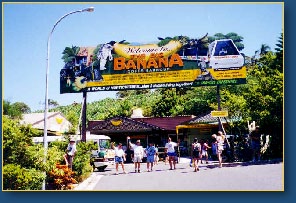
 |
|
| PLANNING FOR THE FUTURE: A PROFILE OF AUSTRALIAN TOURIST ATTRACTIONS. FACTSHEET
Tourist attractions, both man-made and natural, are the core components of a region’s tourism product. Without attractions there is no need for other tourism services. It would be fair to say that without attractions, tourism as we know it would not exist.
It is generally accepted that attractions are not well understood. Attraction research has tended to focus on the characteristics of visitors, with little attention given to the characteristics of attraction businesses. This study will try and balance the lack of understanding of tourist attractions.
The project will examine the management issues in Australian tourist attractions by working with tourist attraction managers. In doing so, the research will identify areas of excellence, as well as opportunities for improvement which will ultimately enhance the competitive future of Australian attractions. The research will investigate whether tourist attractions make use of strategic planning, and how formalised the planning process is. The research is divided into three phases. Phase 1: Australian Attractions Profile The first phase of the study makes use of your answers in the 2000 Australian Tourist Attraction Survey. Your answers will provide insights into the organisational and managerial characteristics of attractions. If we want to learn something about where tourist attractions want to be in the future, and how they are planning for this future, then it is also important to know about attractions in the present. Knowing about the present characteristics of attractions provides a starting point from which the future can be studied. It is therefore necessary to develop a profile of tourist attraction characteristics before the planning activities of operators can be investigated. This information is currently unavailable and will provide a useful and interesting snapshot of the attractions sector. Phase 2: Planning in Attractions The second phase is the core of the study and focuses on how attractions plan for the future. Phase 2 seeks to provide a detailed description of planning in attractions by working with a small number of operators. This phase will investigate the extent of planning, how planning decisions are made and who is involved in the planning process. The strategic choices adopted by attraction managers will also be investigated. Phase 3: Future Attractions Scenarios
The outcomes of the project can best be summarised by the following points:
No. The cover letter included with the questionnaire gives the following assurances:
Answering specific questions is also voluntary. You do not have to answer every question or you can choose to answer nothing at all!.
Because the attractions sector is under-researched there is an opportunity to learn a great deal about Australian attractions. This information will not just be used by the University. It will be shared with the tourism industry and with the attractions sector specifically in an attempt to make Australia a more competitive destination. In return for your support you can choose to receive an industry report outlining the findings of the project. The report will include timely, practical and relevant information, advice and recommendations regarding the management of attractions in Australia. Furthermore, your assistance with this study is seen as a reciprocal partnership. To thank you for your time and effort in completing the questionnaire you will receive a recent James Cook University guide entitled Internet Marketing for Australian Tourist Attractions. The guide contains information and tips about how to establish an Internet site for your organisation and has been written specifically with tourist attractions in mind.
James Cook University is a leading education and research institution in the Tourism field. It is the only Australasian University designated as a member of the World Tourism Organisation's Global Network of Education and Training Centres. The Tourism Program at James Cook University was established with the support of the Australian Tourism Industry Association (now Tourism Council Australia) in 1989. The program publishes Australia's leading international tourism journal and is the focus for tourism research in four national cooperative research centres (CRCs).
How can you find out more? For further details please contact:
Phone: (07) 3344 4853 |


 Pierre
Benckendorff recently completed a Bachelor of Administration (Tourism) with Class
I Honours at James Cook University and has since enrolled in the Ph.D. program. The
project will allow the him to pursue joint interests in tourist attractions and regional
development and to forge links with the tourism industry through the development of
personal and professional skills. The project will enhance understanding of the
operational aspects of regional tourist attractions.
Pierre
Benckendorff recently completed a Bachelor of Administration (Tourism) with Class
I Honours at James Cook University and has since enrolled in the Ph.D. program. The
project will allow the him to pursue joint interests in tourist attractions and regional
development and to forge links with the tourism industry through the development of
personal and professional skills. The project will enhance understanding of the
operational aspects of regional tourist attractions.